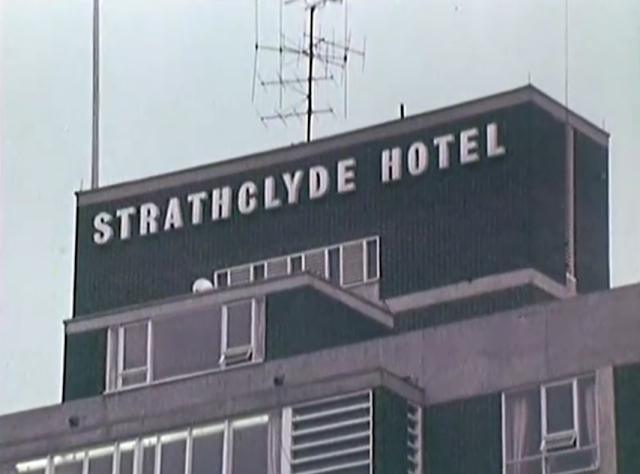 |
| The view from Taberner House (RIP). Image (c) Andy Williams |
Come and celebrate the cultural life of the suburbs at Croydon Till I Die, a series of events featuring authors Andy Miller, Bob Stanley, Lucy Mangan and John Grindrod.
'I think it’s the most derogatory thing I can say about somebody or something: God, it’s so f**king Croydon!' David Bowie (ex-Tin Machine)
The events, and links for tickets:
May 21st– Bookseller Crow, Crystal Palace – with John Grindrod, Lucy Mangan and Andy Miller
May 28th– Rough Trade East, 91 Brick Lane – with John Grindrod, Andy Miller and Bob Stanley
June 11th– Fairfield Halls (Arnhem Gallery), Croydon – with John Grindrod, Andy Miller and Bob Stanley
August 20th-23rd– Green Man Festival, Brecon Beacons, Wales – with John Grindrod, Andy Miller and Bob Stanley
The borough of Croydon has borne the brunt of decades of mockery from the likes of Bromley’s David Bowie, a tradition that stretches back to the general distaste for the suburbs expressed by intellectuals such as Virginia Woolf, T. S. Eliot and E. M. Forster and in books such as The Diary of a Nobody. In fact, the cultural life of the suburbs is rich and varied, and modern music, art, architecture, film and literature would be radically different without the influence of the people who live there and whose work reflects suburbia’s perennial outsider status.
From Bridget Riley to Sam Taylor-Johnson; composer Samuel Coleridge Taylor to Kirsty MacColl; Richard Seifert’s No. 1 Croydon tower (aka ‘the 50p building’) to Croydon College of Art, whose alumni include Ray Davies, Malcolm McLaren, Jamie Reid, Mervyn Peake, Noel Fielding and FKA twigs, Croydon has long played its part in the cultural life of Britain. The Fairfield Halls, opened in 1962, has hosted concerts by The Beatles, Kraftwerk, T. Rex, The Who, Tangerine Dream and Pink Floyd; famously, both Captain Sensible and Rat Scabies of the Damned cleaned the toilets of the venue.
Andy, Bob, Lucy and I all have strong links to the suburbs of South London, and we've have written extensively about the experience of growing up in the area and its influence on how they see the world. This summer we thought, what better than to bring Croydon to fashionable East London, to the foot of a Welsh mountain and to the heart of the town itself, the Fairfield Halls. In evenings of readings, conversation and debate, we'll talk about what we laughingly call our work and the debt that the metropolis owes to suburbia. Urbanistas, lose your preconceptions – and let us take you on a journey to the (Whitgift) centre of the mind.
Andy Miller is a reader, writer and editor of books, a passion born in the municipal libraries of South Croydon. He is the author of the acclaimed The Year of Reading Dangerously: How Fifty Great Books Saved My Life (4th Estate), as well as books about the Kinks and how much he dislikes sport. His work has appeared in the Guardian, Mojo, Esquire and many more. His website is mill-i-am.com and he is on Twitter @i_am_mill_i_am.
Bob Stanley is a writer, film producer and member of the pop group Saint Etienne. His book Yeah Yeah Yeah: The Story of Modern Pop (Faber) is a former Rough Trade Shops Book of the Year. He used to sell eggs on Surrey Street market and currently runs the Croydon Municipal imprint, releasing his own compilations and reissued lost classics. His website is bobstanley.co.uk and can be found on Twitter @rocking_bob.
John Grindrod grew up in New Addington. He is the author of Concretopia: A Journey Around the Rebuilding of Postwar Britain (Old Street), described by the Independent on Sunday as “a new way of looking at modern Britain”. He has written for everything from the Guardianto the 20th Century Society magazine, and can be contacted on Twitter @Grindrod.
Lucy Mangan grew up in Catford but struck out for the heady delights of Bromley for her A-levels. Then went back to Catford. She is a features writer and columnist for the Guardian, Stylist, Puffin magazine and others. She has written four books - the latest is Inside Charlie's Chocolate Factory (Penguin), a history of the Roald Dahl classic to celebrate its 50th anniversary - but prefers reading. She is currently researching her new book, about the history of children's literature, which combines the best of both worlds. She would love you to follow her on Twitter @lucymangan because it saves going out.
 |
| John Grindrod, Andy Miller, Bob Stanley and some authentic Croydon concrete. Image (c) Richard De Pesando |



























































































































